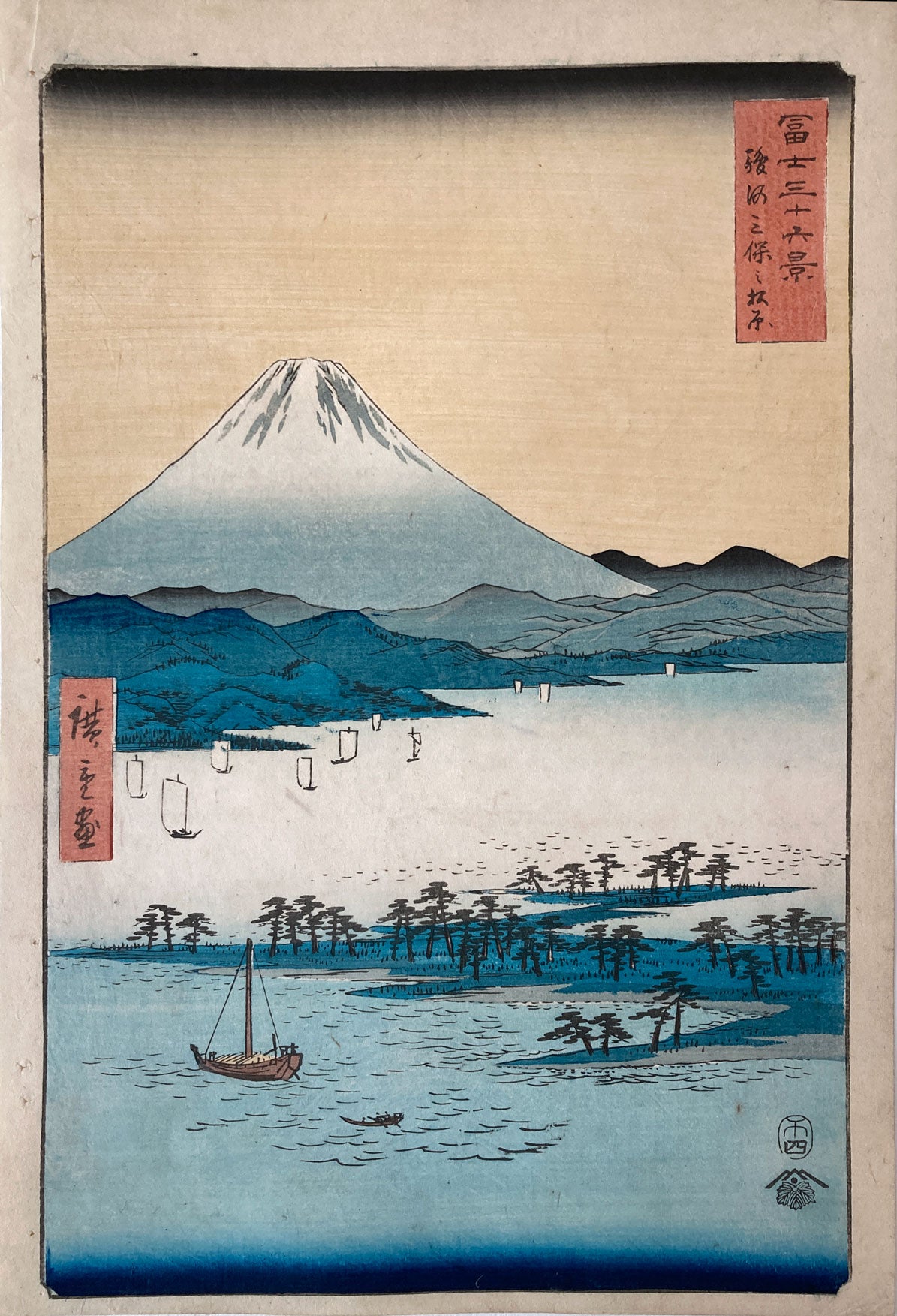About Mie Gallery
Why are we named Mie Gallery?

The most striking pose in Kabuki theatre is the “nirami” (mie) or crosseyed glare. This glare marks a highpoint of the performance. It's like the climax in a movie, all attention is on the lead actor - the camera zooms in and fixes on their dramatic expression. It is no wonder that many artists depicted this crosseyed glare in their Yakusha-e or actor prints.
From Wikipedia, the free encyclopedia:
The mie (見え or 見得, Japanese pronunciation: [mi.e]), a powerful and emotional pose struck by an actor, who then freezes for a moment, is a distinctive element of aragoto Kabuki performance. [...]
Like that momentary glare, frozen in time, we have curated woodblock prints that we find artistically compelling. The primary period we focus on is 1840s - 1900. Hokusai, Hiroshige, Hiroshige II, Kunisada, Kuniyoshi, Yoshitoshi, Yoshiiku, Yoshitora, Kyosai, and others are the main artists that we seek. We also select specific genres and series that we find interesting. Mie Gallery has hundreds of original Japanese woodblock prints that are for sale. We have attempted to provide background information and links to online references wherever possible.
What Do We Believe?
We believe it is more important to own an original woodblock print, from the first printing or at least while the artist was still alive, than a pristine reprint by a later publisher. An original Japanese woodblock print, surviving over 150 years, through world wars, fires, earthquakes, the elements, and multiple generations of owners - has more of a story to tell than a modern reprint.
How We Price Our Japanese Woodblock Prints
Our pricing depends on several factors, what we purchased the print for, the condition of the print, the popularity of the artist, and the subject matter. We like to think of ourselves of curating fair to good quality original prints, that are priced for collectors on a tight budget. Also we have museum quality prints that are often 20% or more below what you'll find on other websites - go ahead and compare.

We accept online payments via PayPal and Credit Card. We also accept crypto currencies - please contact us for more information on how to purchase with Ethereum or Bitcoin.
You can buy our original designed shirts and stickers at our T-Shirt Shop.
Consulting Services and Presentations
We are strong believers in education, and introducing others to the fascinating world of ukiyo-e. To this end, we are available for no-cost consultation on Japanese woodblock prints from the 1800's to 1900's. If you have a business or educational organization in the Los Angeles area, we are available for in-person presentations, teaching events, and consignment of artwork. Please contact us for more information.
Calling All Collectors!
If you are a collector of Ukiyo-e prints and would like to impart your collecting journey, favorite prints, and tips, to other collectors and enthusiasts, please consider joining our Collector Page by filling our our short Google form.
We welcome helpful comments and additional information. Please contact us if you have a question or comment.
Happy Collecting!
Richard Parr
Gallery Curator and Collector
Popular Print Categories
-

Actors - Yakusha-e
Actor pictures, or "Yakusa-e" represent the largest genre of Japanese woodblock prints....
-

Geisha - Bijin-ga
This collection represents woodblock prints that feature geisha, courtesans, and other types...
-

Landscape Prints
Travel blossomed in Edo society. The shogunate developed five highways branching outward...
-

Tsukioka Yoshitoshi
Tsukioka Yoshitoshi (1839 – 1892) is widely recognized as the last great...
-

Kawanabe Kyosai
Kawanabe Kyōsai (1831 – 1889) was a Japanese painter, caricaturist and ukiyo-e...
-

Utagawa Kunisada
Utagawa Kunisada (1786 – 1865), was also known as Utagawa Toyokuni III....
-

Warriors - Musha-e
"Musha-e" is the Japanese term for pictures of warriors and samurai from...
-

Toyohara Kunichika
Toyohara Kunichika (30 June 1835 – 1 July 1900) was an amazing ukiyo-e artist. At age...
-

Utagawa Hiroshige
Utagawa Hiroshige (1797 – 1858), also known as Ando Hiroshige, was an...
-

Utagawa Kuniyoshi
Utagawa Kuniyoshi (1798 – 1861) was one of the last great masters...
-

Toyohara Chikanobu
Toyohara Chikanobu (1838–1912), also known as Yōshū Chikanobu, was a Japanese painter and woodblock...










